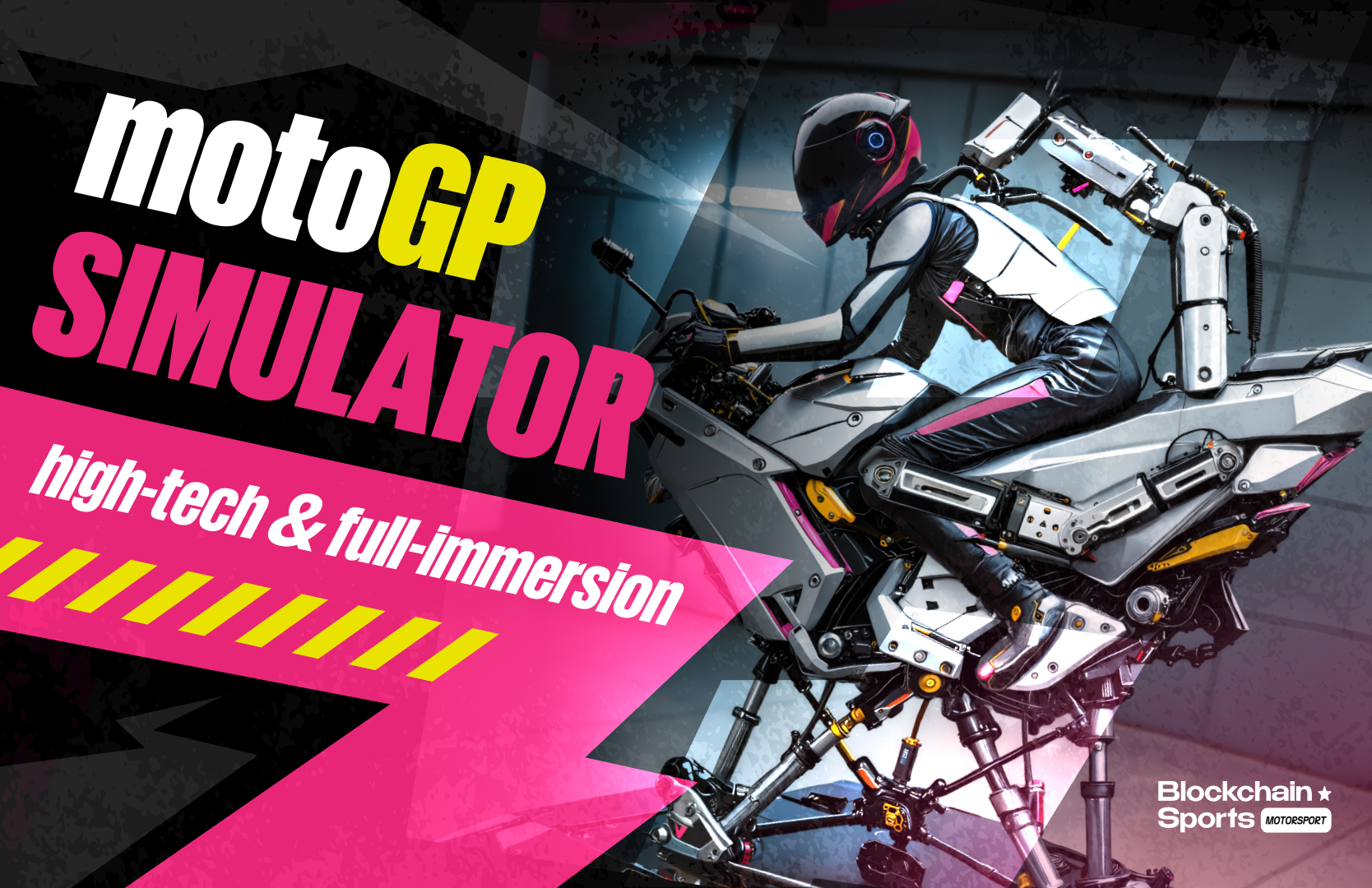Revolutionizing Training: Blockchain Sports Motorsport XR Simulator

As you know, the main part of the Blockchain Sports Motorsport project is an immersive motorsport XR training simulator. Unlike conventional VR or typical racing simulators, this XR (Extended Reality) simulator aims to reproduce the intense physical experience of riding a high-speed motorcycle. | For athletes, the challenge goes beyond operating handlebars or accelerating—the real test is the full-body exertion and balance required to master forces like centrifugal pressure, acceleration, and braking. The team envisioned a simulator that not only mirrors the physical dynamics of racing but allows riders to train with the true sensations of real-world competition. |
What is Blockchain Sports Motorsport XR Simulator? |
Blockchain Sports Motorsport sought to create an experience that authentically replicates the bodily sensations and challenges unique to motorcycle racing. Unlike a car driver, a motorcyclist lacks the stability of four wheels and is constantly balancing to counter the forces of momentum and inertia. When a motorcyclist leans into a turn, the body works independently, maneuvering the bike by exerting force on footpegs and handlebars. These subtle yet powerful interactions are often overlooked in VR/XR simulations, which generally limit a rider’s experience to angles of only 35 degrees and simple vibration motors.
After consulting with expert racers, the team learned that such arcade-like designs failed to capture the depth of forces acting on a rider. In real racing, a rider might lean as much as 55-62 degrees, feeling the impact of numerous simultaneous forces. For a truly immersive experience, they realized the simulator must be capable of replicating the intricate balance and dynamic reactions needed in a race—so they decided to pursue a structure that prioritized force transmission rather than visual imitation of a bike.
Core components of the XR Simulator |
Achieving this next-level realism requires combining various complex components. The design team focused on using advanced motors, actuators, vibration elements, and shock-absorbing technologies to make the entire platform as responsive as an actual motorcycle. Here’s a look at some of the critical elements integrated into the Blockchain Sports XR Simulator:
Actuators and Vibration Motors: The simulator employs numerous motors to recreate physical feedback. Actuators adjust the simulator’s position based on the rider’s actions, delivering real-time feedback for every turn, acceleration, and braking instance. Vibration motors are strategically placed to imitate the rumble and terrain vibrations a rider feels during a race. This configuration not only amplifies immersion but also prepares athletes for the unpredictable dynamics of real-world tracks.
Dynamic Platform and Tilting Mechanism: The simulator's platform can twist, tilt, and shift in multiple directions, faithfully replicating the lean angles and trajectory changes of a high-speed race. Riders experience forward and backward tilts simulating acceleration and braking, as well as lateral motions that reflect the centrifugal force when taking sharp turns. Every movement is timed and responsive, making the athlete feel like they are on an actual track.
- Shock Absorbers and Anti-Shock Mechanisms: To replicate the bumps and jolts of different track conditions, the platform incorporates both shock-absorbing and anti-shock features. This provides a balance between safety and realistic feedback, allowing riders to experience the impact of the terrain without risking injury. The adjustable shock absorbers mimic the unpredictable elements on tracks, preparing athletes to handle unexpected jolts and slips.
Replicating complex forces |
In racing, motorcyclists experience around 30 distinct forces, which affect body position, balance, and response time. Blockchain Sports Motorsport tackled this challenge by designing the simulator to mimic several crucial forces through intelligent motor controls and a feedback system that transmits these forces to the body in real time. Among the sensations the simulator replicates are:
Acceleration and Lifting: When a rider accelerates sharply, the simulator mimics the sensation of lifting the bike’s front wheel, causing the athlete to balance by pressing firmly on the footrests—like a squat at an incline. The tilt also allows riders to control their ascent with throttle manipulation, much like in real racing.
Braking Force and Counterbalance: Upon braking, the platform subtly pushes the rider forward, simulating the force experienced when slowing at high speeds. In a split-second reaction, the system transfers force to simulate the rider bracing against the handlebars to maintain control. The platform also counterbalances so the rider can practice maintaining stability under braking pressure.
Cornering and Sliding Dynamics: In racing, even a slight miscalculation can lead to wheel slips, which can be dangerous if not corrected instantly. Blockchain Sports Motorsport designed the simulator to recreate this by causing the handlebars to subtly shift, requiring the rider to balance the “bike” through precise adjustments. This teaches athletes to correct potential skids, helping to simulate crucial techniques like throttle control and speed retention in curves.
Exoskeleton & Sensor systems |
To reach the level of immersion and detail they aimed for, the developers implemented a smart exoskeleton with integrated sensors that record body movement and distribute forces more naturally. The exoskeleton doesn’t replicate the visual form of a motorcycle but includes essential bike-like components such as footrests and handlebars. Motors within the exoskeleton structure apply force directly to the rider’s body, allowing them to physically feel the inertia, centrifugal pull, and even back-pressure experienced in actual races.
The sensors gather data on the rider’s muscle engagement and physical reactions, which the simulator interprets to adjust its feedback in real time. This gives athletes a holistic view of their racing technique and helps them correct any misalignments or errors without the financial or physical risk of an on-track mistake.
Blockchain Sports Motorsport’s XR simulator marks a pioneering step forward in motorsport training, setting a new benchmark for how athletes can prepare for races. By designing a responsive and motorized platform that replicates the real forces acting on a motorcyclist, the team has transformed a traditional racing simulator into an athletic training tool. This simulator doesn’t just replicate the track but immerses riders in the authentic experience of racing, equipping them with invaluable skills that could one day be lifesaving on the track.